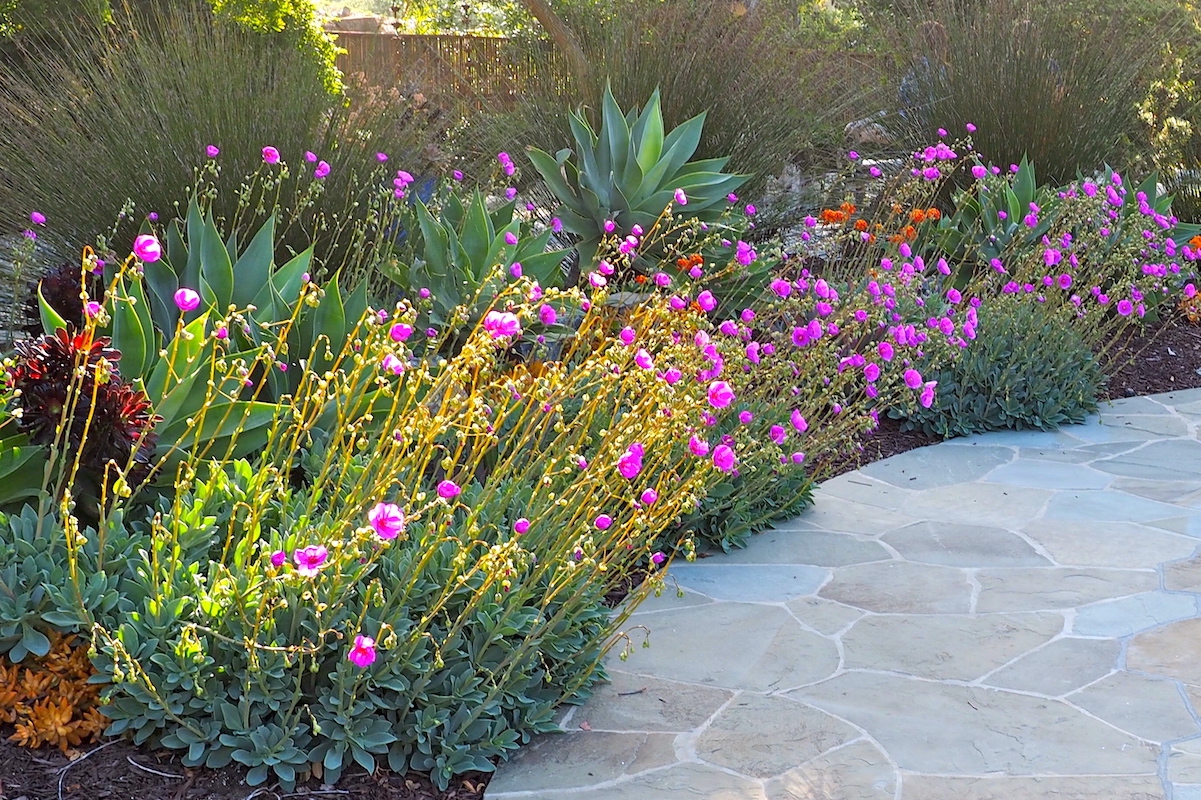
Grow Calandrinia (Cistanthe grandiflora, Purslane)
Gray-green calandrinia (Cistanthe grandiflora) shrubs sit quietly, building their strength, from late summer until spring. Then, like the fireworks they resemble, they explode with neon-bright blooms.
Here and in my new video you'll find out how to keep calandrinia healthy and flowering, and how to use it to enhance your own garden.
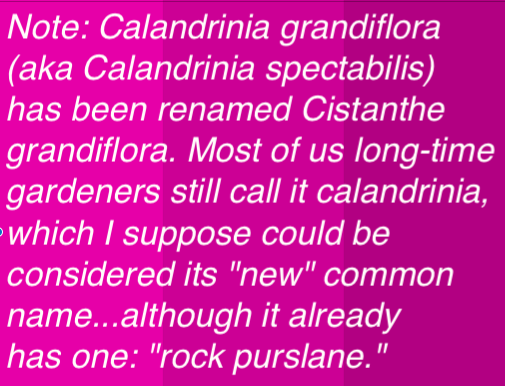
Calandrinia is native to Chile. Rising above its oval, gray-green leaves float masses of magenta, poppylike flowers. Buds along spaghetti-thin, branching stems open successively.
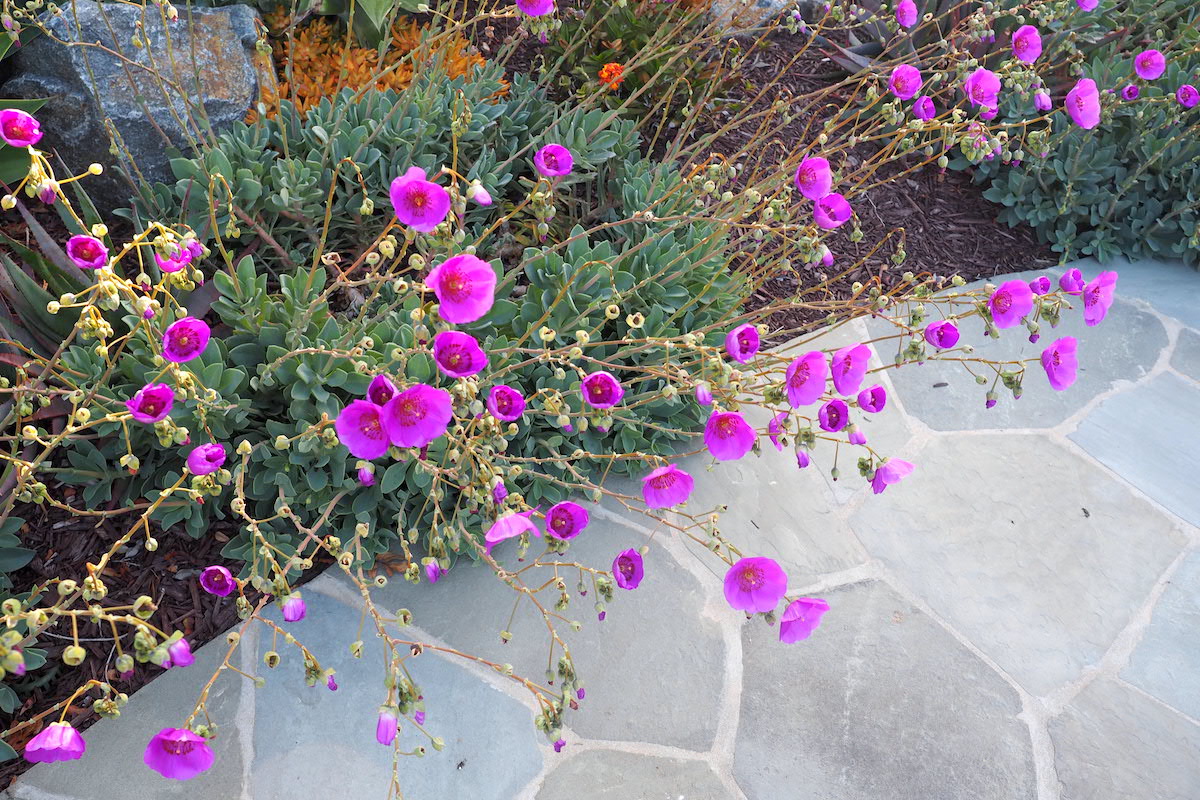
The 2- to 3-foot-tall flower stems of calandrinia are unusual among succulents.
Shrubs attain a height of one to two feet, and under ideal conditions spread 3 to 4 feet.
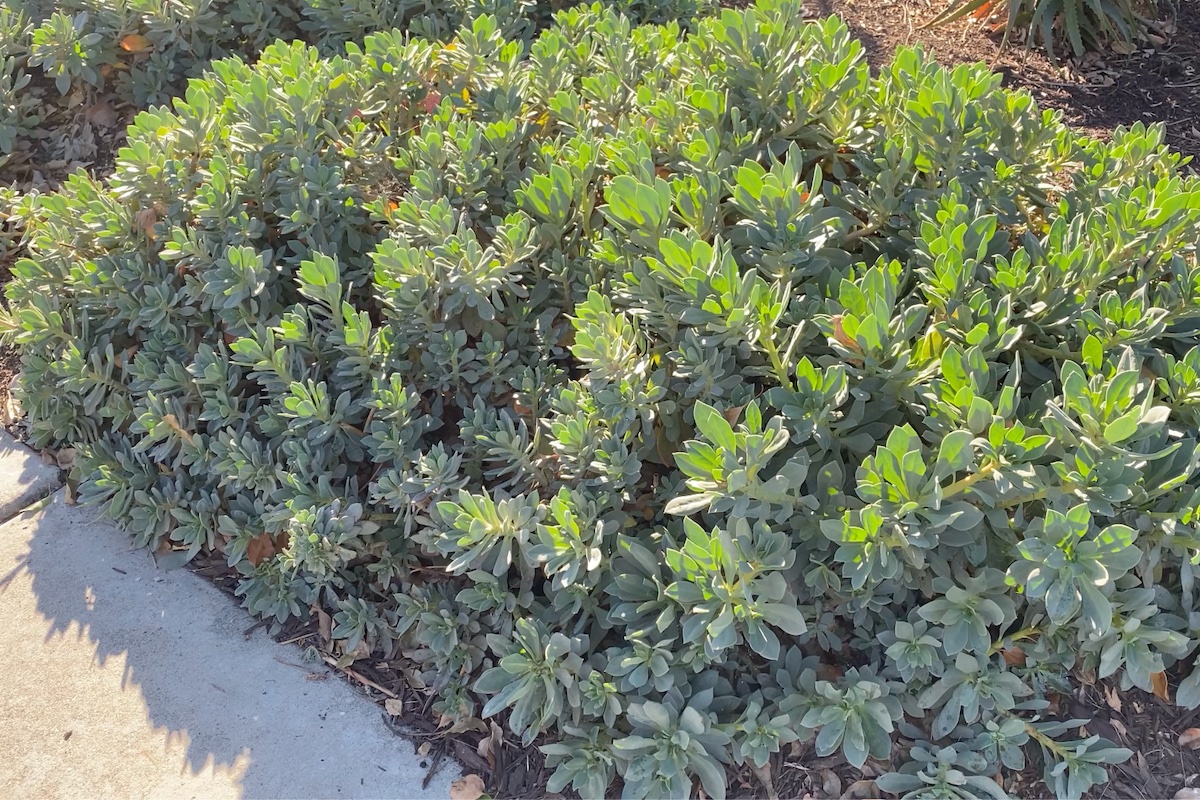
This is how calandrinia looks out of bloom, in midwinter...
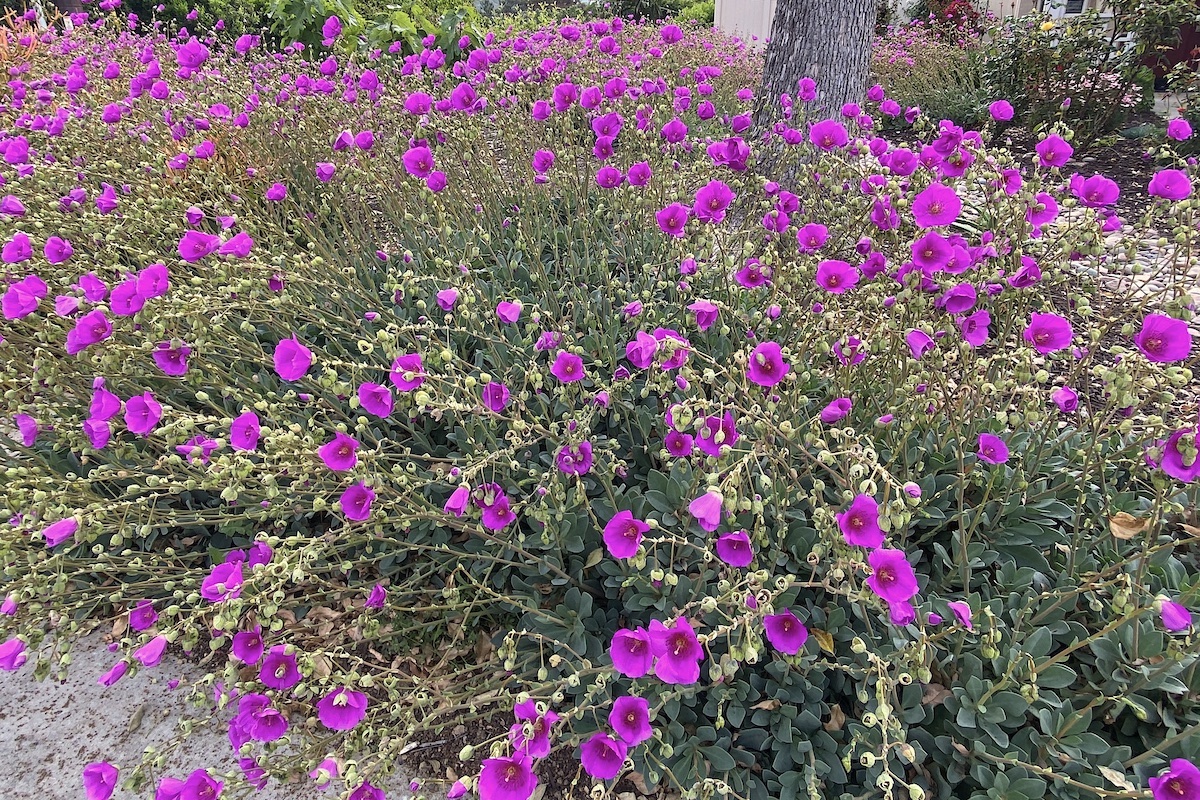
...and here's the same plant in spring.
Incidentally, calandrinia is good for gardens plagued by bunnies. They don't eat it.
Calandrinia care and cultivation
This South American succulent's requirements are much the same as those of common, popular South African succulents, such as aloes, kalanchoes, jades and haworthias. However, calandrinia prefers being in the ground, not in pots. Its roots need room to spread.
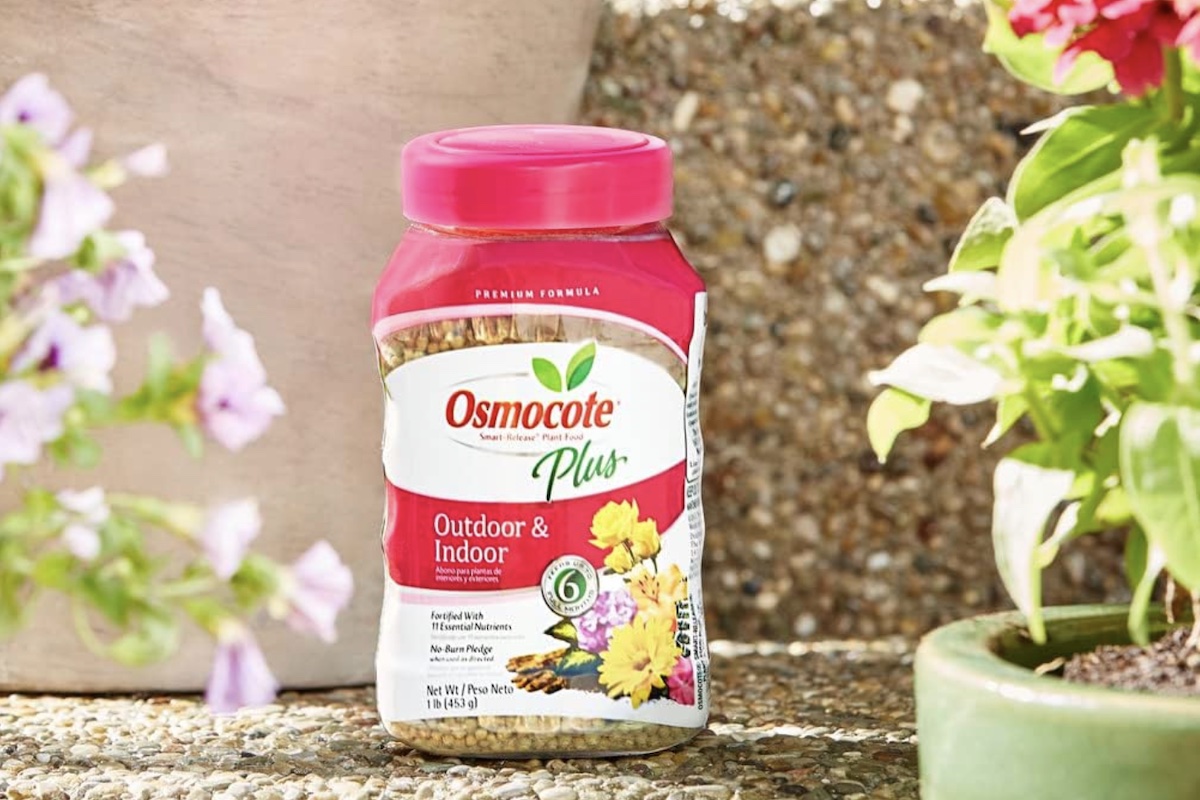
Calandrinia is a "heavy feeder," a nursery term. I like time-release fertilizers, and Osmocote Plus is a good one for flowering ornamentals. (Affiliate link)
Calandrinia also is more cold-hardy (down to 20F) compared to similar-looking, leafy shrub succulents that melt at 32F.
- Deadheading: When blooms are spent and no buds remain, cut stems where they emerge from plants. This tidies the shrubs and encourages repeat blooming.
- Pruning: During winter dormancy, keep plants compact by trimming them a third to a half their height. Stems will branch where cut and send forth new leaves followed by flowers.
- Propagation: A bonus of pruning are cuttings you can use to fill garden gaps.
Light, heat, soil, fertilizer, water
Calandrinia needs sun to bloom and thrive, but to get the amount it needs, it has to be out in the open, which---depending on where you live---may expose it to too much sun, especially in summer.
Case in point: I’m nine miles inland from the Pacific at 1,500 feet, and although I do grow calandrinia in my garden, it's clearly happier nearer the coast. When summer temps rise above 90 degrees, it loses some of its leaves, and flowering ceases.
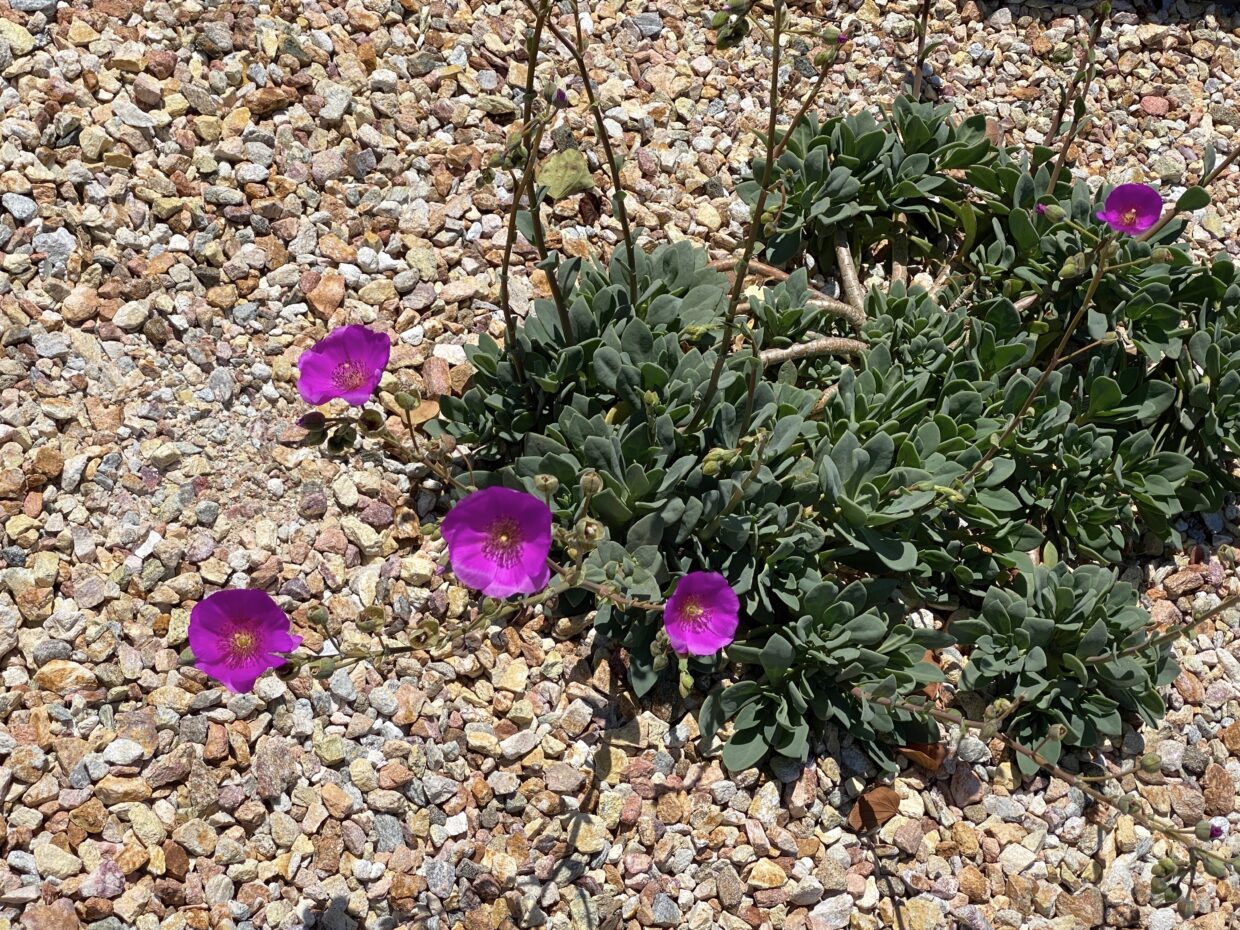
Surround the plants with mulch or a crushed-rock topdressing to keep weed growth down and hold moisture in the soil. Topdressing will enhance the look of your garden, too.
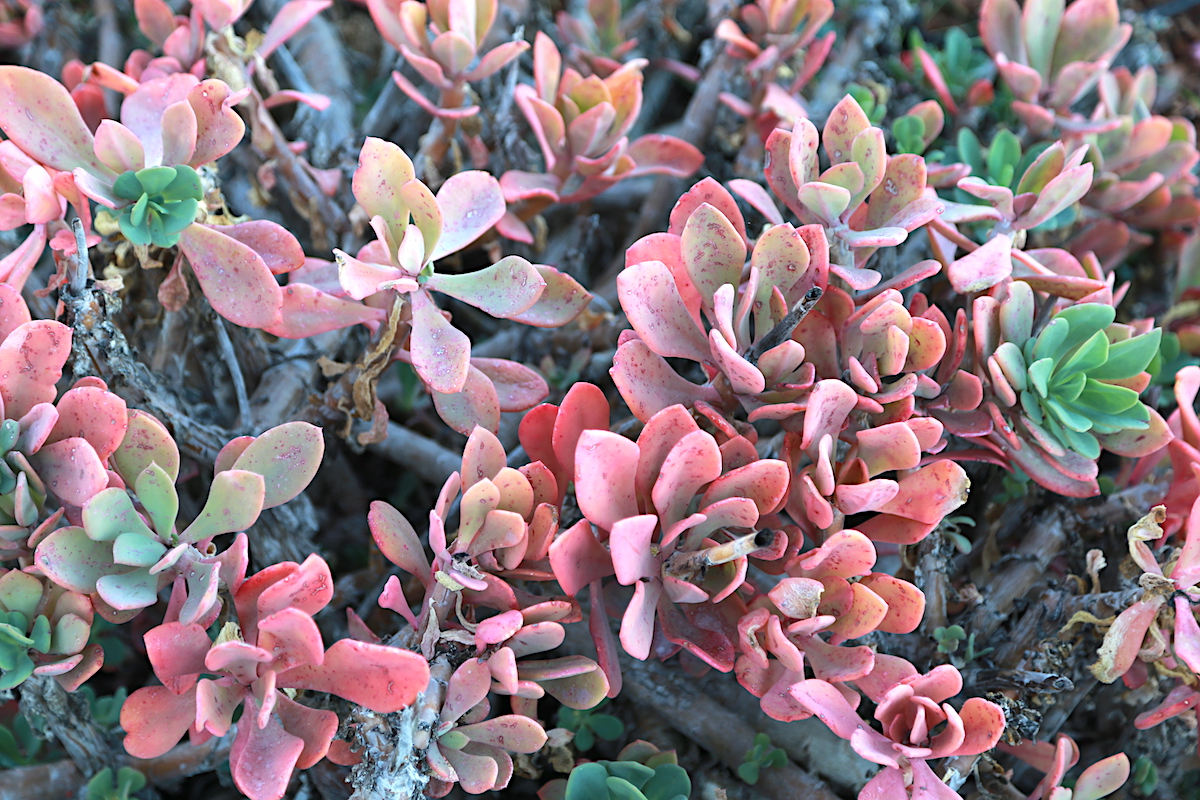
Given too much sun, calandrinia stresses to shades of rose. The redder the leaves, the slower the growth, and the fewer the flowers.
- Rich soil helps promote lush foliage and a better bloom show. Amend garden soil with compost, or dig a planting hole twice the diameter of the nursery pot and backfill with commercial potting soil.
- Improve drainage and soil aeration with pumice or perlite (approximately 20 to 30 percent of the soil mix).
- Water regularly. A good soaking once a week (twice weekly during heat waves) should be adequate, providing roots don't sit in soggy soil.
Where to put calandrinia in your garden
All flowers grow in the direction of greatest sun, a phototropic tendency especially noticeable in those with tall, skinny bloom spikes.
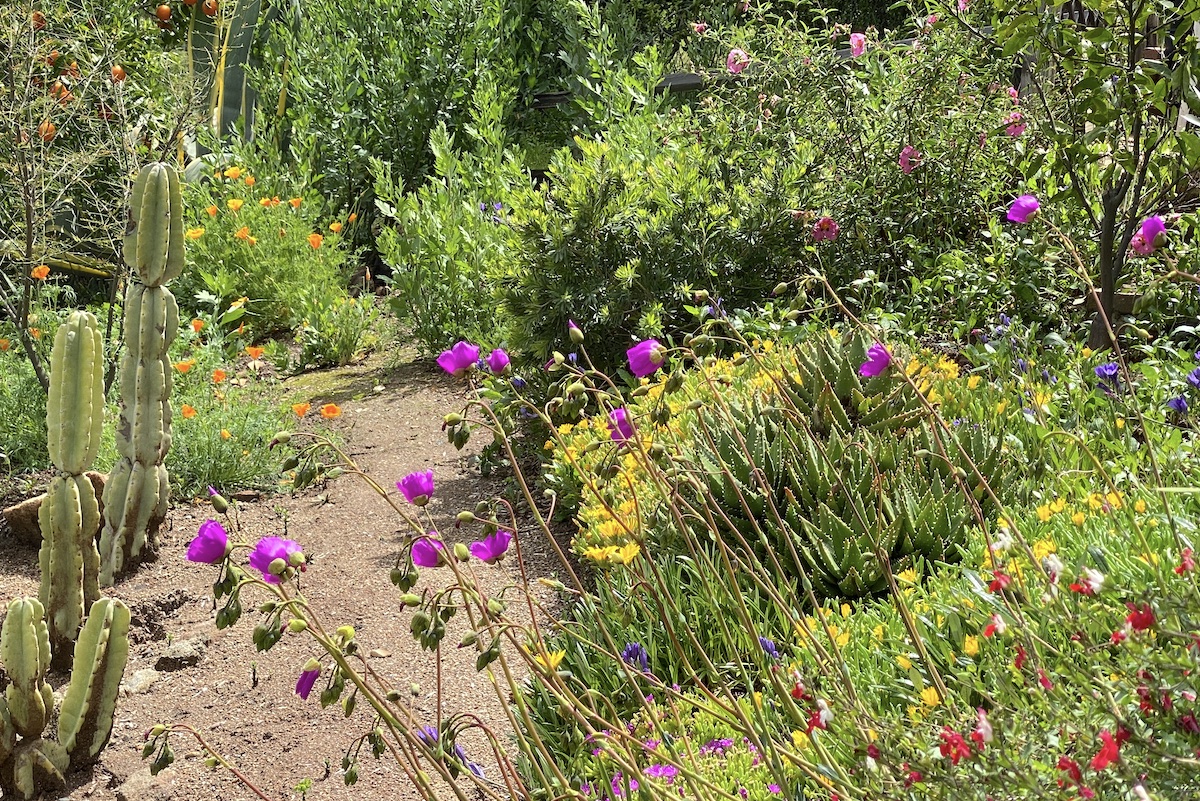
I inadvertently planted calandrinia where its flowers blocked a pathway later on, by leaning toward morning sun.
Keep contrast and repetition in mind
It’s eye-catching to combine complimentary colors, and when it comes to calandrinia’s neon magenta, that means yellow or yellow-green flowers and foliage---the brighter the better.
Contrast calandrinia with yellow-flowering succulents such as Sedum rubrotinctum, aeoniums, and Lampranthus 'Lemon' ice plant. Calandrinia also looks amazing with anything orange, like aloe spires, California poppies, and Euphorbia tirucalli ‘Sticks on Fire’.

This succulent landscape includes calandrinia, blue Senecio mandraliscae, orange nasturtiums and aeoniums. At center is Aeonium ‘Zwartkop’ with conical yellow flowers and dark burgundy leaves. Francesca Filanc garden, Rancho Santa Fe, CA
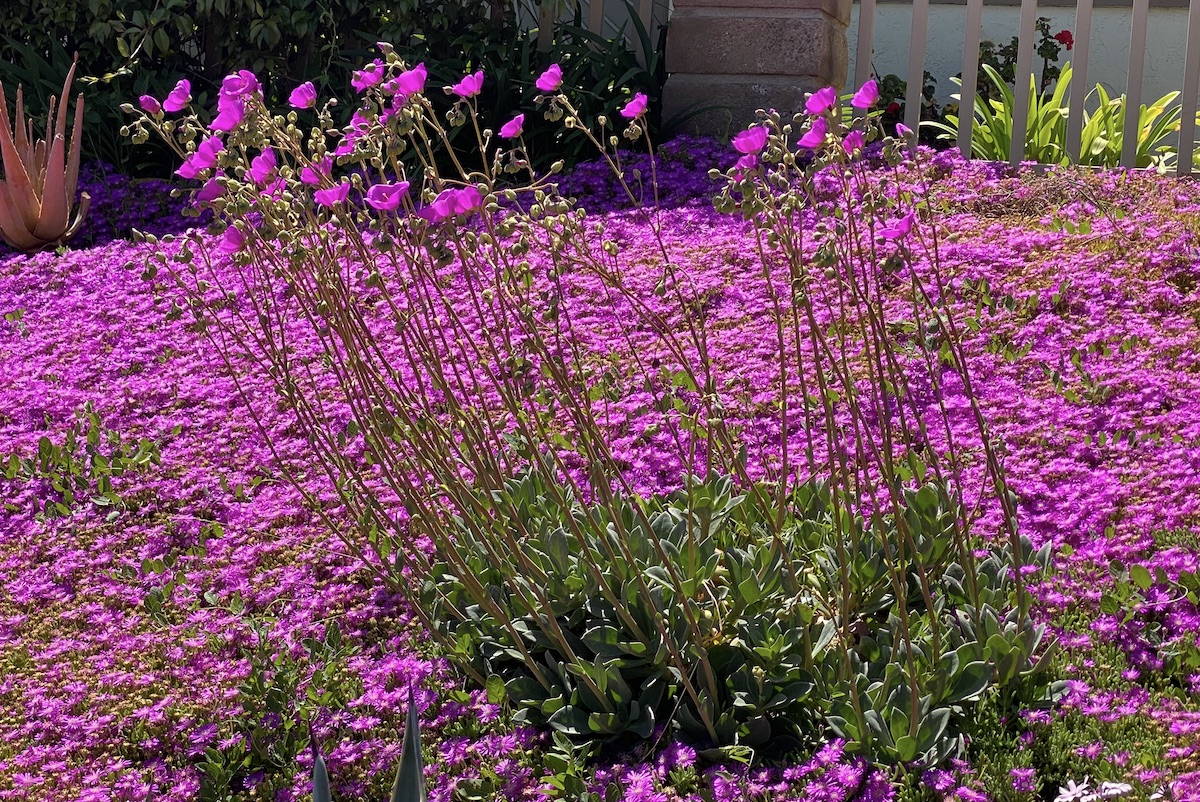
In a stunning example of repetition, Lampranthus productus ice plant echoes calandrinia's magenta flowers.
Should it go in the front...
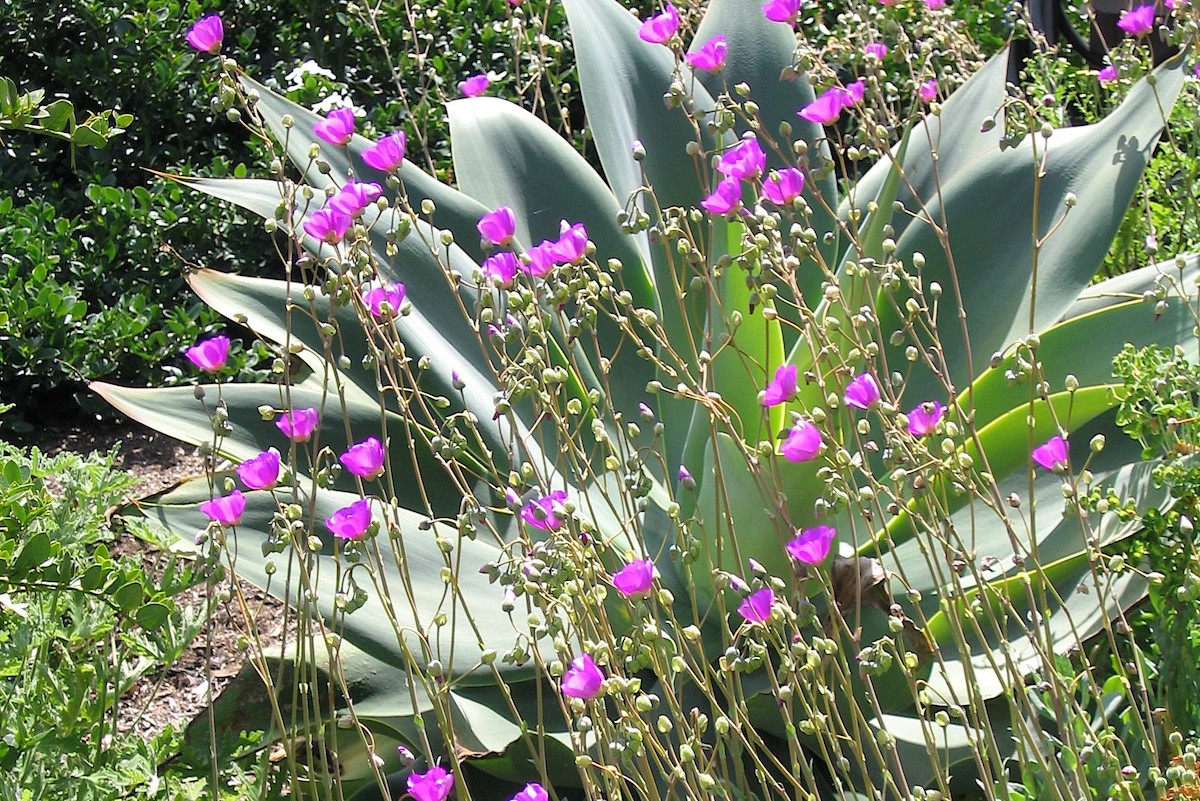
Used as a foreground plant, calandrinia suggests a beaded curtain. Behind it is Agave attenuata.
...or the back of your garden?
In the streetside garden below, Jeff Moore of Solana Succulents nursery used calandrinia as an airy background plant. It draws the eye into a landscape that flows around boulders and rock pathways.
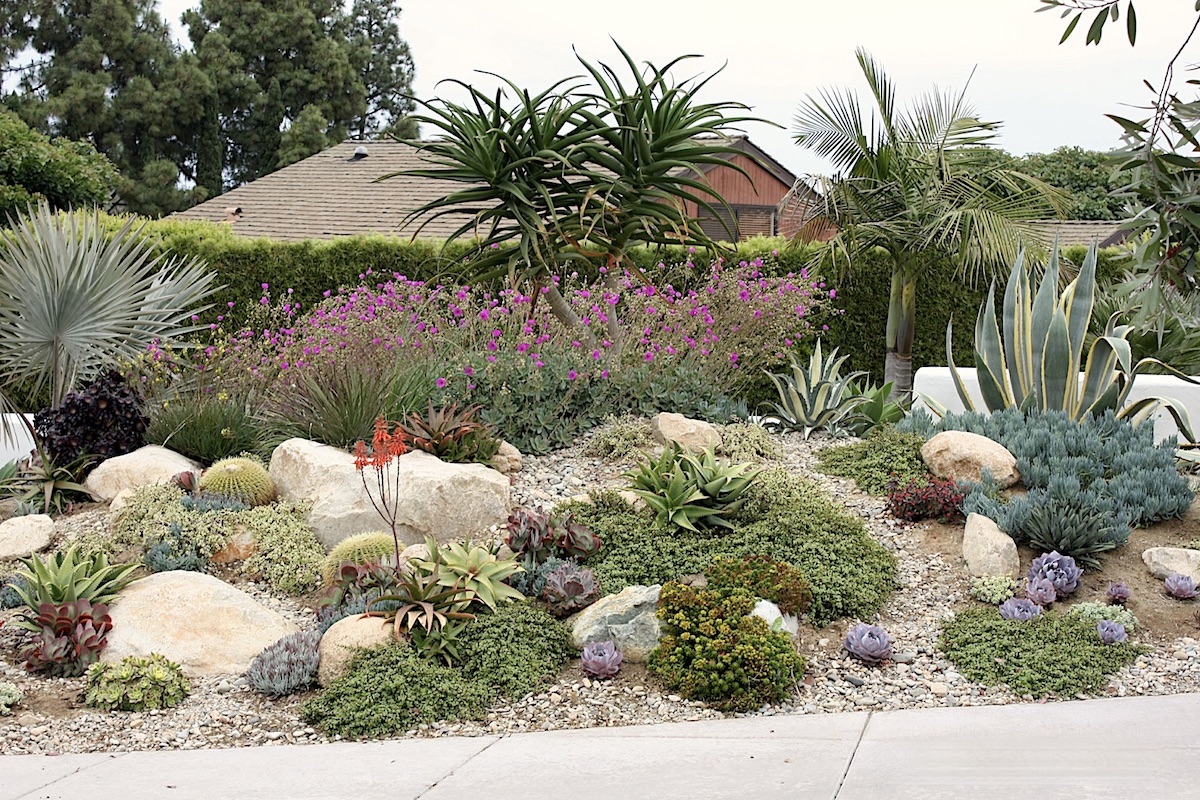
Calandrinia's butterfly-like flowers float behind aloes, agaves, echeverias, barrel cacti, blue Senecio mandraliscae, Aeonium 'Zwartkop', red-flowering Euphorbia milii, and mounding Portulacaria afra.
P.S. Like this garden? See more of it in the video. ;+)
Got a pool? Get calandrinia!
As with most nonspiny succulents, calandrinia makes a good-looking, debris-free landscape enhancement alongside swimming pools.
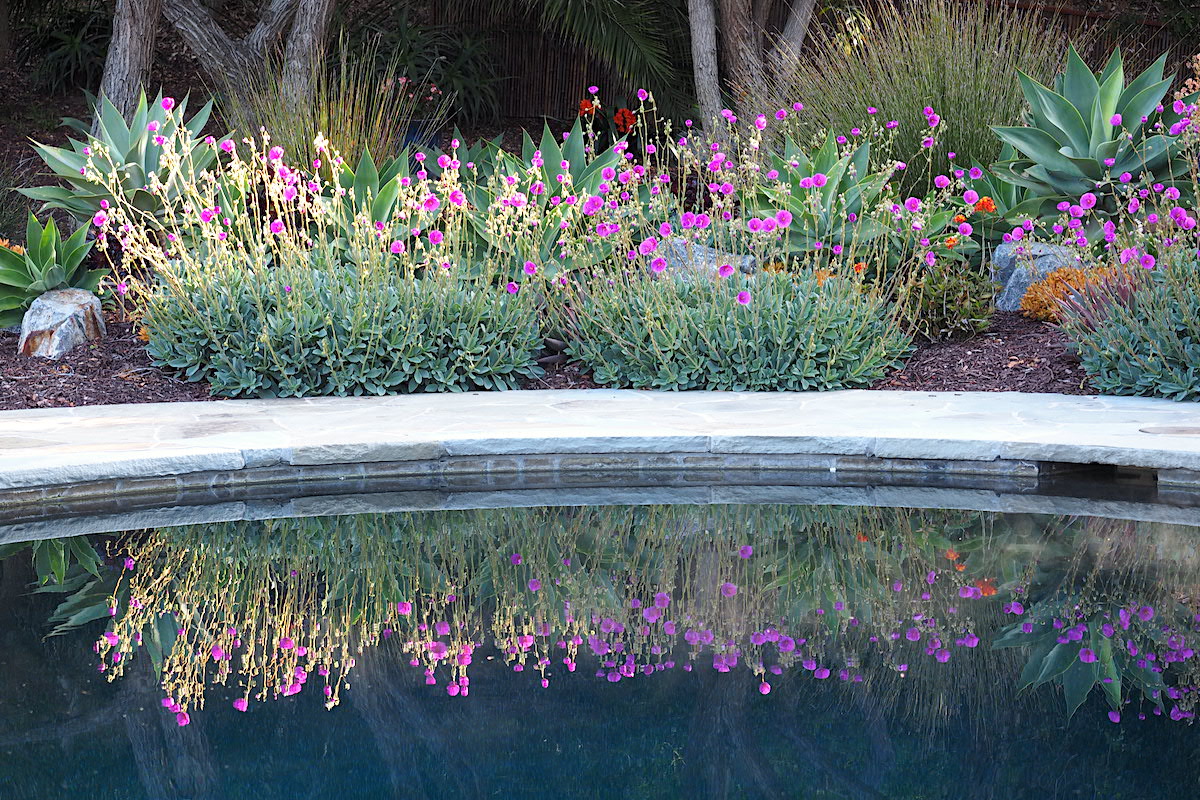
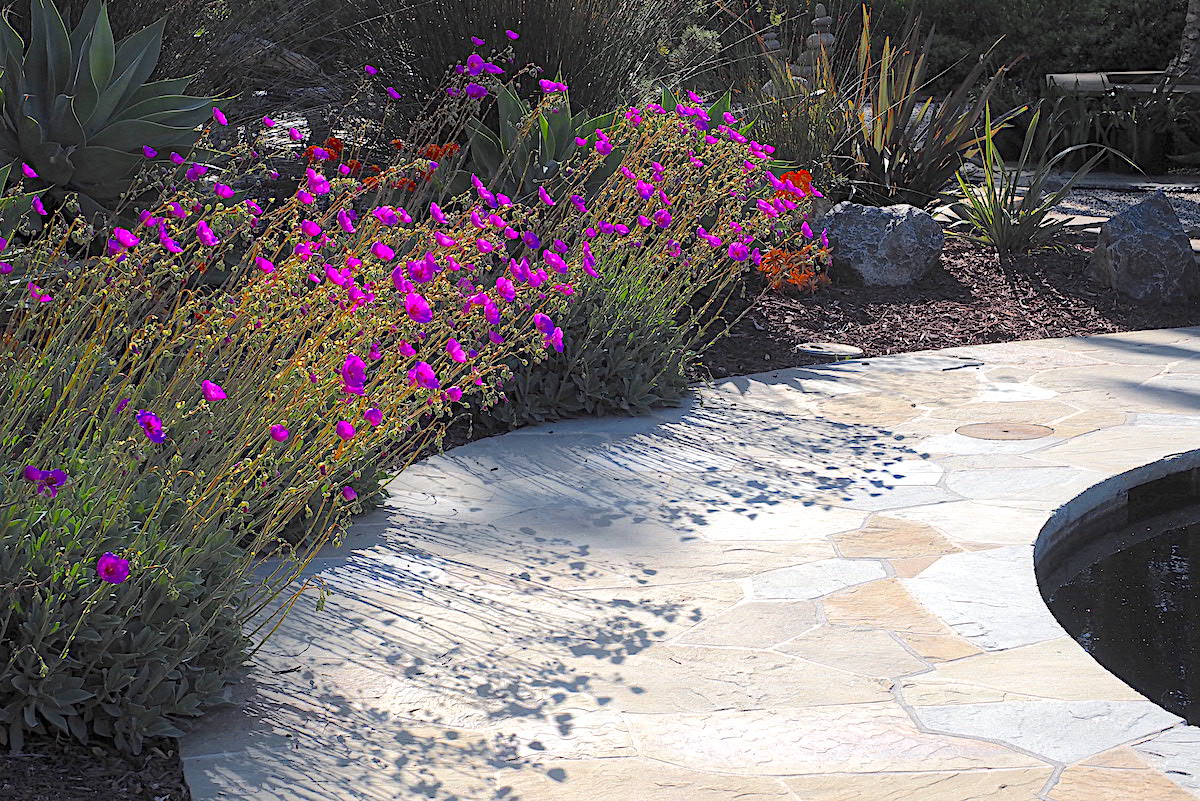
Can you guess the direction of greatest sunlight? And look at those lacy shadows!
These two pool photos and the photo at the top of the page are of the garden of Ken and Barbara Kubarych, Del Mar, CA.
Create a "desert" garden
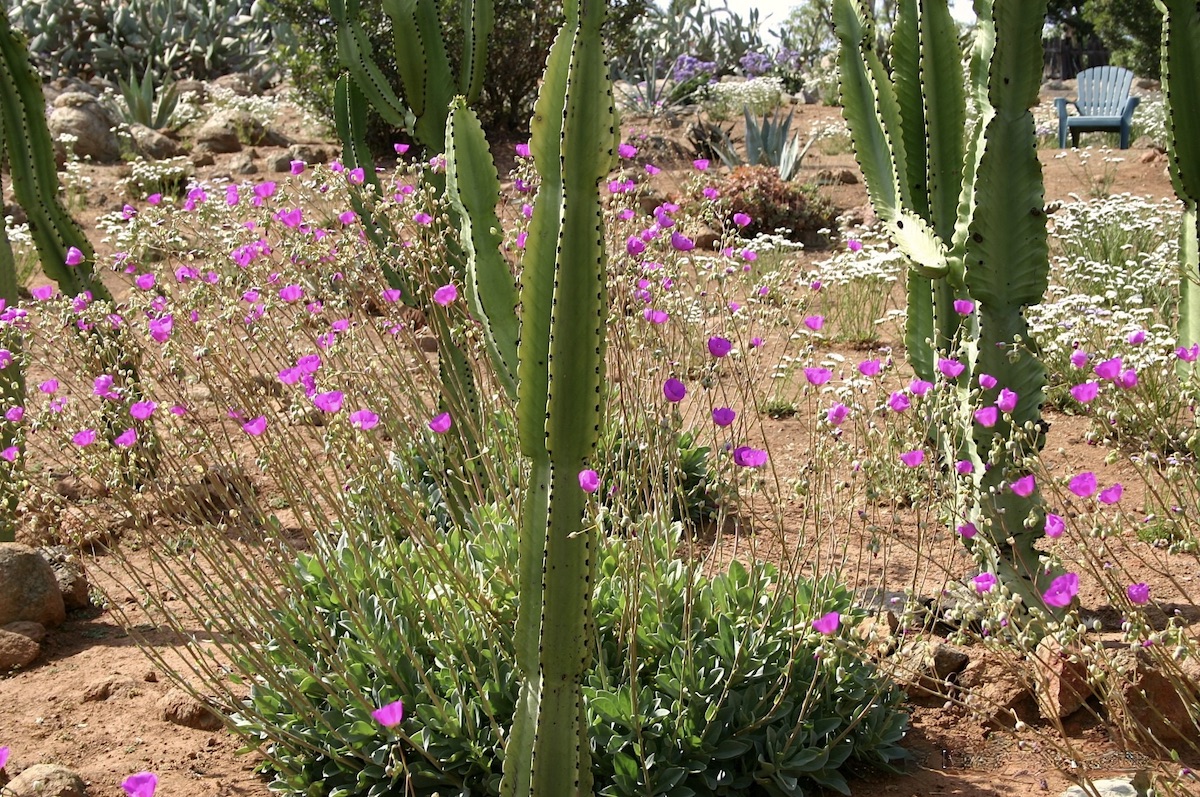
Calandrinia planted amid columnar succulents (here, Euphorbia ammak) suggests desert wildflowers in spring. Peggy Petitmermet garden, San Diego
Look for 'Jazz Time'
Find calandrinia (don't forget, it's officially Cistanthe grandiflora) late winter through spring at garden centers and succulent specialty nurseries.
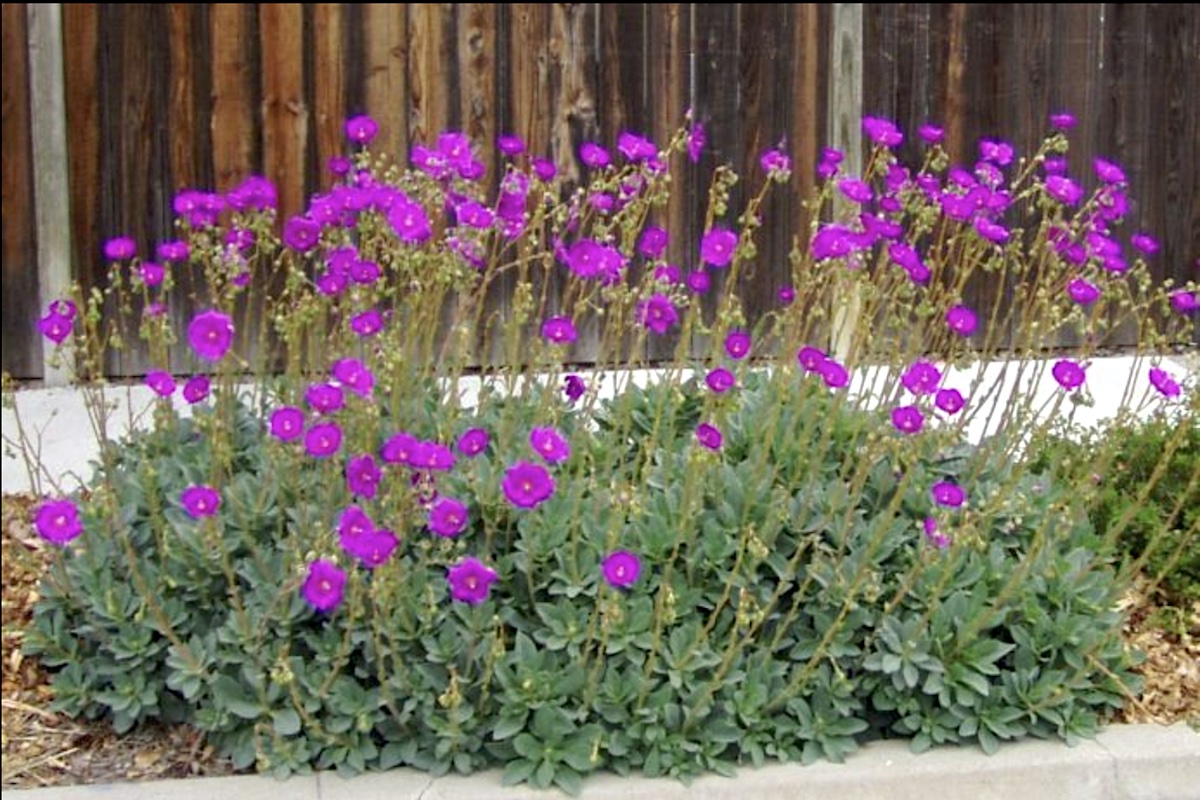
Cistanthe grandiflora (Calandrinia spectabilis) 'Jazz Time' Photo: Waterwise Botanicals nursery
I've heard that the Cistanthe grandiflora cultivar ‘Jazz Time’ is tougher and longer-lived than the species. Maybe you can tell the difference; to me they look the same.
Now it's your turn...
As always, your comments and questions are most welcome! Do let me know if you found this helpful, and share your own experiences with this lovely Chilean succulent.
Related Info on This Site
A Colorful Succulent Garden to Copy
You could easily copy this colorful succulent garden at Weidner’s nursery in Encinitas, CA. It’s a three-dimensional showcase of succulents superbly suited to mild, frost-free regions. Most of the plants are readily available, and all are in my book, Designing with Succulents.
Create a “Flower” Bed with Rosette Succulents
Easy-care rosette succulents resemble flowers and bloom beautifully too! Use them to create the look of a flowerbed without all the care and maintenance flowerbeds require. In the Idea Gallery below, see many marvelous images of garden beds, pots and planters full of rosette succulents. All photos have main succulents ID’d. May they spark your creativity…



i saw this growing on the beach north of Santiago Chile last December where it is native. Along with it were short alstroemerias, 2 species of puya, columnar cacti, recumbent cacti and many other native plants. Plus a blowhole, beautiful surf, sealions and dolphins.
Hi Jim — Sounds like a wonderful place to visit. Calandrinia would be gorgeous with alstroemerias, I’m going to try it! Thanks for a great comment.
Good morning, Debra
I had to laugh after reading today’s newsletter. My neighbor and I planted Calandrinia in our succulent rock gardens. Pretty, yes, but so very invasive. After a couple years, we yanked them all out.
They would probably be better in a larger space but they didn’t work for us.
Kate in Rio Vista
Hi Kate —
What would I do without subscribers like you? I had no idea one of calandrinia’s drawbacks was it’s invasive in your area, perhaps even the entire Sacramento river delta and Bay Area. It’s worth investigating. Made me consider that the big “drawback” to most succulents—being frost-tender—keeps them from taking over certain areas, just as desert heat does in others.
Thank you for posting this. Hopefully others will benefit from it, and it might encourage more people in various locations to post their experiences too.
Hi Debra- Callindrinia is one of my fav’s. I garden on the central coast, 2 blocks from the water. I am 1 block from a 35 acre Audubon preserve and my Callindrinias are regularly browsed by Bambi. Liquid fence does the job for me. I just have to remember to use it!
What?! They’re not deer-proof? Good to know.
Btw, I got that info from the website of a renowned CA nursery specializing in ornamentals. (I will politely advise them of your Central Coast Bambi Report.) But Thumper…so far, it looks like everyone agrees bunnies don’t eat it. At least that!
Hi Debra, Callindrinia is one of my favorites in my garden also! I did not know the name of it so thank you for that! Mine was growing slowly in my succulent garden for a few years but last summer, it really started to branch out and creep over some of my other succulents which I have to rescue. In the springtime, my California poppies poke up thru the Callindrinias and look so pretty! am going to cut it back and donate some of the cuttings to a friend of mine whose back yard has a pool in it with not much color around it. I also didn’t know that it doesn’t grow well in pots. I have the original plant in a pot and it is not doing well. I plan to dig it up and plant it in another area to see how it does. Im also going to plant some clippings in other areas of my yard. Thanks for the great article!
Hi Jean — Great to hear from you! Thank you for a glowing calandrinia report!
This is one of my favorite succulents in Berkeley CA. As always, thanks so much for all your info. I have all your books and have shared them with neighbors too!
Good to know it does well in Berkeley. Thank you for the kind comments! Love the name “Dry Garden Dale” BTW.
What type of pot/container would be best for Cistanthe grandiflora if no place to put in the ground? Thank you.
It would be great in a window box or something similarly sized. You could also tuck small plants or cuttings into container gardens for airy pops of neon color in spring.
I am looking for Edible Succulents. Purslane Oleracea is a very nutritious plant, high in oxalates (that may cause kidney stones if you are prone to them).that can be reduced by 80%. It is worth a look. I live in zone 3 in Eastern Oregon. We have the record low for Oregon -55 below. We got -20 to -30 every winter but not for more than a week or 2. Summers are in the 90’s to low 100’s. I forage as much as I can for every edible plant I can find which is a lot, but as you all know there is no succulents in these winter temps.
Thank you for any information.
Patty D
Hi Patty — There’s a section in my book, Succulents Simplified, about edible succulents; and I have a page here on my site: https://debraleebaldwin.com/succulent-plants/ten-edible-succulents-and-how-to-prepare/ LMK if you find it helpful!